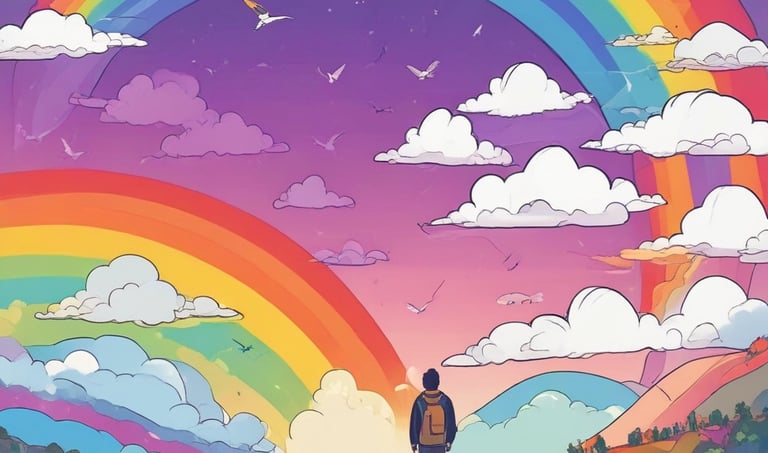
Color Psychology
Science and Mystical Studies of Color
PSYCHOLOGYARTBUSINESS
6/13/20253 min read
Colors are more than just visual stimuli; they are powerful forces that shape our perceptions, influence our behaviors, and even impact our physical and mental well-being. This blog post delves into the fascinating intersection of color psychology, science, and mysticism, exploring how colors affect our brains, influence our actions, and how businesses can leverage this knowledge to attract customers.
We will navigate the scientific explanations behind color perception, dissect the psychological effects of different colors, and touch upon mystical perspectives, such as rainbow and chakra colors, revealing the correlations between color psychology and science studies.
We will navigate the scientific explanations behind color perception, dissect the psychological effects of different colors, and touch upon mystical perspectives, such as rainbow and chakra colors, revealing the correlations between color psychology, science, and mystical studies.
Colors evoke a range of emotional and psychological responses. These responses are often influenced by cultural associations and personal experiences. Here's a look at how some common colors are perceived:
Red: Associated with energy, excitement, passion, and danger. It can increase heart rate and blood pressure.
Blue: Linked to calmness, serenity, trust, and stability. It can promote relaxation and reduce stress.
Green: Evokes feelings of nature, growth, harmony, and balance. It is often associated with health and well-being.
Yellow: Associated with happiness, optimism, energy, and intellect. It can stimulate creativity and improve mood.
Orange: A blend of red and yellow, it combines energy and happiness. It is often associated with enthusiasm, warmth, and creativity.
Purple: Linked to royalty, luxury, spirituality, and wisdom. It can evoke feelings of mystery and creativity.
Pink: Associated with love, compassion, gentleness, and femininity. It can promote feelings of comfort and nurturing.
Brown: Evokes feelings of earthiness, stability, and security. It is often associated with reliability and comfort.
Black: Associated with power, elegance, sophistication, and mystery. It can also evoke feelings of sadness or fear.
White: Linked to purity, innocence, cleanliness, and simplicity. It can create a sense of spaciousness and clarity.
Color and Motivation:
Colors can be strategically used to motivate or deter actions. For instance, red is often used in marketing to create a sense of urgency or excitement, encouraging customers to make immediate purchases. In contrast, green is often used in healthcare settings to promote a sense of calmness and well-being.
Color and Productivity:
The colors in our work environment can significantly impact our productivity and focus. Blue is often recommended for offices as it promotes concentration and calmness, while yellow can stimulate creativity and energy. However, excessive exposure to bright colors can also be distracting, so it's essential to strike a balance.
Businesses can leverage color psychology to influence consumer behavior and enhance their brand image. Understanding how colors affect emotions and perceptions is crucial for creating effective marketing campaigns and product designs. Here are some examples:
Branding: Colors play a vital role in creating a brand identity. A brand's color palette should reflect its values and target audience. For example, a financial institution might use blue to convey trust and stability, while a food company might use red and yellow to stimulate appetite.
Marketing: Colors can be used to attract attention and create a desired emotional response in marketing materials. For example, a sale advertisement might use red to create a sense of urgency, while a luxury product advertisement might use gold or purple to convey elegance and sophistication.
Packaging: The colors used in product packaging can influence purchasing decisions. For example, organic food products often use green to convey freshness and naturalness, while energy drinks often use bright, vibrant colors to convey energy and excitement.
Website Design: The colors used on a website can impact user experience and conversion rates. For example, a call-to-action button might use a contrasting color to draw attention, while the overall color scheme should be consistent with the brand's identity.
Retail Environment: The colors used in a retail store can influence customer behavior and mood. For example, warm colors like red and yellow can create a sense of excitement and encourage impulse purchases, while cool colors like blue and green can create a more relaxed and inviting atmosphere.
Thanks for reading.
Fern Lage, Maggic Studio


